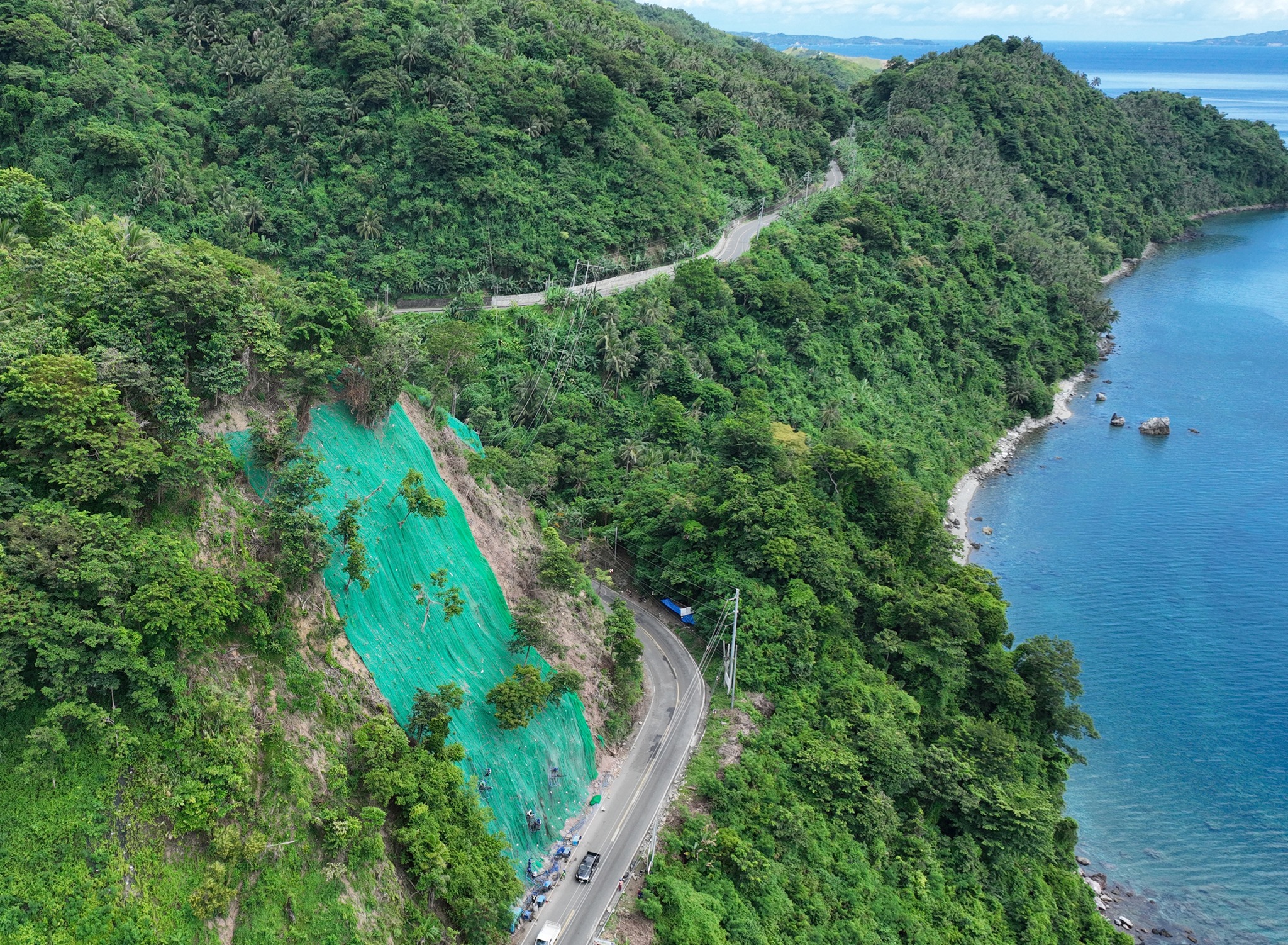
Samal Island – Davao City Connector Project (Courtesy of DPWH)
MANILA – The Department of Public Works and Highways (DPWH) is neck-deep in projects since Day 1 of the administration of President Ferdinand Marcos Jr., out to implement the “Build, Better, More” infrastructure agenda, both a continuation and improvement of former president Rodrigo Duterte’s “Build, Build, Build” program.
Based on the 8-Point Socioeconomic Agenda, the DPWH will be constructing under the Farm-to-Market (FMR) Network Master Plan a detailed framework and strategic directions for sustainable projects.
As identified by the Department of Agriculture, FMR roads worth PHP7.485 billion and farm-to-mill roads prioritized by the Sugar Regulatory Administration amounting to PHP356 million will be constructed to help ensure food security.
An additional PHP500 million is included in the proposed 2023 DPWH budget for the construction and improvement of access roads leading to irrigation and farming areas identified by the National Irrigation Administration.
One such project is the Samal Island-Davao City Bridge Project worth PHP23.04 billion.
It’s a toll-free four-lane, cable-stayed bridge (extradosed) with a total length of 3.98 kilometers, including the Davao ramps.
It can serve around 25,000 vehicles a day between Davao City and the Island Garden City of Samal crossing over Pakiputan Strait.
Reduce vulnerability, mitigate scarring
Under the Evacuation Center Development Program, at least one evacuation center per city or municipality will be built to minimize disturbance of school buildings being used as evacuation sites and temporary post-disaster shelters.
Sixteen evacuation centers were completed from July 1 to Sept. 25 while additional 64 are targeted for completion next year.
The DPWH had previously built Covid-19 quarantine/isolation facilities, off-site dormitories and modular hospitals from April 2020 to Sept. 2022.
Ten facilities will be completed on or before Nov. 30.
In disaster response, DPWH deploys equipment and manpower during clearing operations after typhoons and earthquakes.
It also conducts rapid assessment of affected structures such as national bridges, government hospitals, public school buildings, government buildings, flood control, and other structures.
A total of 2,933 structures were assessed, of which 2,766 are safe for occupancy, 148 are restricted, and 79 are off-limits.
Under construction
Among the ongoing projects under the Luzon Spine Expressway Network Program are the Central Luzon Link Expressway, Phase 1; Arterial Road Bypass Project, Phase 3; NLEX-SLEX Connector Road; Manila Cavite Toll Expressway Project; C-5 South Link Expressway; Southeast Metro Manila Expressway (C6 Expressway, Phase I); Cavite-Laguna Expressway; Camarines Sur Expressway; Visayas High Standard Highway Network Program; Metro Cebu Expressway; and Mindanao High Standard Highway Network Program, including Davao City Coastal Road and Davao City Bypass Road Construction Project.
In the National Capital Region, the DPWH has the Metro Manila Logistics Improvement Program which involves the construction/improvement of bridges crossing Pasig River, Marikina River, and Manggahan floodway.
It will provide alternative linkages between major thoroughfares and increase the number of usable roadways that would decongest traffic in Edsa and other major roads in Metro Manila.

2 slope protection projects for motorists traversing a landslide-prone national highway in Nabas, Aklan (Courtesy of DPWH)
Pipeline projects
The DPWH is also looking to construct these multi-billion projects: Bataan-Cavite Interlink Bridge, Panay-Guimaras-Negros Island Bridges Project, Cebu-Mactan Bridge (4th Bridge), and Coastal Construction Project.
Other high impact projects are the Marawi Recovery and Rehabilitation, Road Network Development Project in Conflict-Affected Areas in Mindanao, Samar Pacific Coastal Road, Improving Growth Corridors in Mindanao Road Sector Project, and Emergency Assistance for Reconstruction and Recovery of Marawi (Output 2: Reconstruction and Development Plan for a Greater Marawi, Stage 2).
Flood Control Program
Under the Flood Management Master Plan for Metro Manila and Surrounding Areas, the DPWH has recommended 11 structural mitigation measures worth PHP351.718 billion to be implemented from 2012 until 2035.
A total of PHP85.4 billion worth of flood mitigation/intervention projects consistent with the Metro Manila master plan have already been programmed for 2011 up to 2022, representing 24 percent of the total estimated cost.
The following are some of the major flood control projects consistent with the said master plan: Pasig-Marikina River Channel improvement project, Phase IV; Pasig-Mankina River Channel improvement project, Phase V; and Metro Manila Flood Management Project
The other major flood control projects nationwide are Cavite Industrial Area Flood Risk Management Project; Integrated Disaster Risk Reduction and Climate Change Adaptation Measures in the low-lying Areas of Ambal-Simuay River; Rio Grande de Mindanao River Flood Control and Riverhank Protection Project; and Flood Risk Management Project in Cagayan de Oro River.
“The backbone of an economy is its infrastructure. The infrastructure program of the Duterte administration must not only continue but, wherever possible, be expanded,” Marcos said during his inaugural State of the Nation Address on July 25.
“We shall confidently build on this firm foundation established by my predecessor. As it is in building an edifice. We must keep the momentum. And aspire to build better more,” he added. (PNA)
